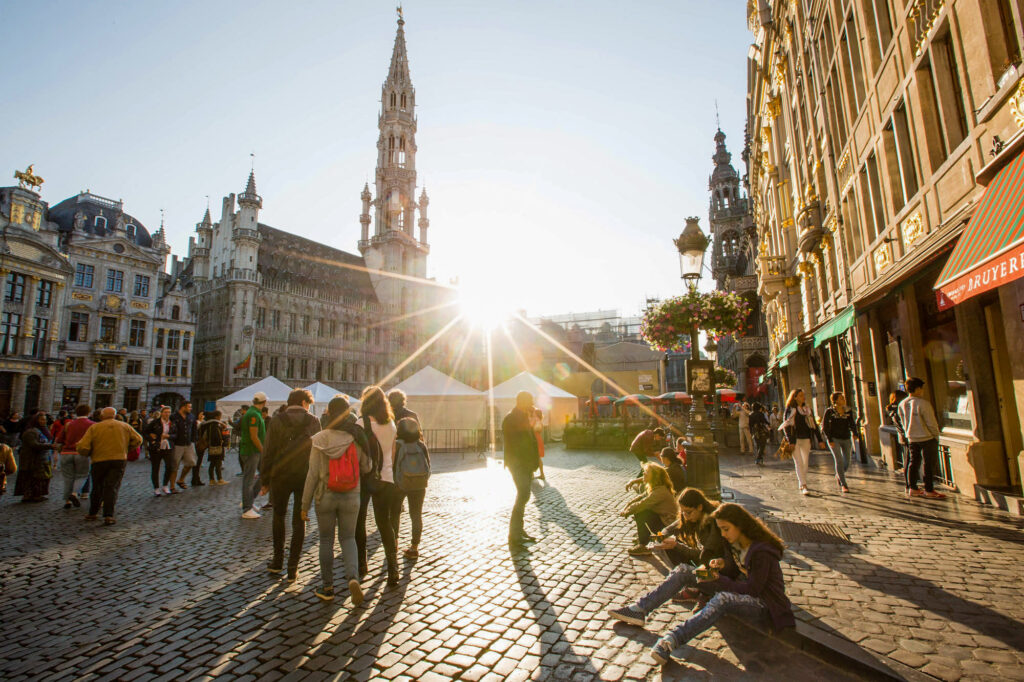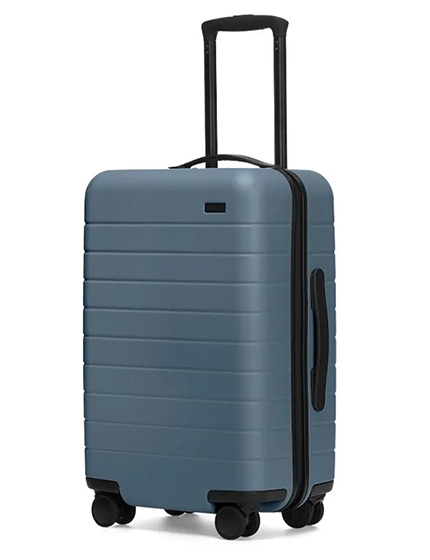Some countries are consistently labeled as dangerous by the global media and government. Then there are countries that most people would consider relatively safe, but actually pose some unusual hidden dangers. We’ve scoured the globe and identified seven countries that are more dangerous than you might think. The reasons will surely surprise you. Read on, get informed, and travel safe.
Before you check out the most dangerous countries in the world, here are the six most dangerous beaches in the United States (and where to swim instead).
Notice: Undefined offset: 4 in /nas/content/live/stagingstmllc/wp-content/plugins/smartertravel-shared/includes/ads/includes/api.php on line 92
Notice: Undefined offset: 5 in /nas/content/live/stagingstmllc/wp-content/plugins/smartertravel-shared/includes/ads/includes/api.php on line 92
Notice: Undefined offset: 6 in /nas/content/live/stagingstmllc/wp-content/plugins/smartertravel-shared/includes/ads/includes/api.php on line 92
Notice: Undefined offset: 4 in /nas/content/live/stagingstmllc/wp-content/plugins/smartertravel-shared/includes/ads/includes/api.php on line 98
Notice: Undefined index: pass_through_args in /nas/content/live/stagingstmllc/wp-content/plugins/smartertravel-shared/includes/ads/includes/api.php on line 158
Notice: Undefined index: wrapper in /nas/content/live/stagingstmllc/wp-content/plugins/smartertravel-shared/includes/ads/includes/api.php on line 159
Notice: Undefined offset: 4 in /nas/content/live/stagingstmllc/wp-content/plugins/smartertravel-shared/includes/ads/includes/api.php on line 92
Notice: Undefined offset: 5 in /nas/content/live/stagingstmllc/wp-content/plugins/smartertravel-shared/includes/ads/includes/api.php on line 92
Notice: Undefined offset: 6 in /nas/content/live/stagingstmllc/wp-content/plugins/smartertravel-shared/includes/ads/includes/api.php on line 92
Notice: Undefined offset: 4 in /nas/content/live/stagingstmllc/wp-content/plugins/smartertravel-shared/includes/ads/includes/api.php on line 98
Notice: Undefined index: pass_through_args in /nas/content/live/stagingstmllc/wp-content/plugins/smartertravel-shared/includes/ads/includes/api.php on line 158
Notice: Undefined index: wrapper in /nas/content/live/stagingstmllc/wp-content/plugins/smartertravel-shared/includes/ads/includes/api.php on line 159
Notice: Undefined offset: 4 in /nas/content/live/stagingstmllc/wp-content/plugins/smartertravel-shared/includes/ads/includes/api.php on line 92
Notice: Undefined offset: 5 in /nas/content/live/stagingstmllc/wp-content/plugins/smartertravel-shared/includes/ads/includes/api.php on line 92
Notice: Undefined offset: 6 in /nas/content/live/stagingstmllc/wp-content/plugins/smartertravel-shared/includes/ads/includes/api.php on line 92
Notice: Undefined offset: 4 in /nas/content/live/stagingstmllc/wp-content/plugins/smartertravel-shared/includes/ads/includes/api.php on line 98
Notice: Undefined index: pass_through_args in /nas/content/live/stagingstmllc/wp-content/plugins/smartertravel-shared/includes/ads/includes/api.php on line 158
Notice: Undefined index: wrapper in /nas/content/live/stagingstmllc/wp-content/plugins/smartertravel-shared/includes/ads/includes/api.php on line 159
Belgium

One of the biggest surprises on this list came straight from the U.S. State Department’s Travel Advisories, where, we were surprised to see the likes of France, and even Denmark and the Netherlands, received Level 2 (Exercise Increased Caution) warnings due to risks of terrorist attacks. On that list was also Belgium, which the U.S. State Department has identified as a place where terrorism is a possibility that travelers should be aware of. The State Department’s Overseas Security Advisory Council (OSAC) identifies Brussels in particular as having a moderate risk of crime such as pickpocketing, scamming, purse-snatching, and theft from moving vehicles. According to the United Nations Office on Drugs and Crime’s Global Study on Homicide, Belgium has the highest rate of intentional homicides in Western Europe, with 1.7 victims per 100,000 population. For perspective, the Western Europe average was only around 1:100,000. But don’t kiss your dreams of sipping Trappist Ales at a Bruges cafe goodbye just yet. Belgium might be a little more dangerous than, say, Switzerland (where the murder rate is around 0.5:100,000), but it’s still way safer than most places. This is especially true if you come from the United States, where the homicide rate stands at around 6 per 100,000 people, more than three times that of Belgium.
The United States

Jackson Square, New Orleans/Oyster
In many ways, the United States seems like a safe country, particularly to its own citizens — after all, it’s natural to feel safer and more at ease where you know the language, the culture, and what to do in case of an emergency. However, if you look at the data around things like homicide and firearm deaths, the U.S. can feel downright dangerous, especially compared to other countries with similarly advanced economies. To start, the murder rate is around 6 per 100,000 nationally. The South is particularly hard hit, with the highest death rates in Mississippi (13.4 per 100,000 people), followed by Louisiana, Alabama, and Missouri, respectively. Roughly three quarters of homicides in the U.S. are with firearms. The firearm homicide rate stands at around 4.5 per 100,000 population as of 2017, still way higher than the overall homicide rate in Western Europe. The U.S. is also the capital of mass shootings (defined as four or more people being shot in one incident). CBS reported that there were 417 such incidents in the U.S. in 2019 alone, based on data gathered by the Gun Violence Archive. And while gun violence is a huge risk factor in the U.S., it’s not the only It’s not the only risk factor in the United States. According to a study conducted by the USC and published in Population and Development Review, drug overdose rates are around 3.5 times higher than in other high-income countries. In fact, if you’re an American, your chances of dying from an accidental opioid OD are higher than your chances of dying in a traffic accident.
Estonia

Although the US has the highest death by drug overdose rate in high-income countries, Estonia isn’t doing much better, with a considerably higher rate of drug-related deaths than elsewhere in Europe, as highlighted in the European Drug Report: Trends and Developments 2019. What’s more worrying still is that the majority of people going into treatment for opioids in the country said their drug of choice was fentanyl, an incredibly powerful synthetic opioid that’s 50 to 100 times more potent than morphine and considered one of the most dangerous drugs on the black market today. Because of the notoriously dangerous drug’s popularity in Estonia, it shouldn’t come as that much of a surprise that the country reports the highest drug-induced mortality rates, clocking in at about 130 people per million (the next-highest, Sweden, had a markedly lower rate of 92 per million). And while alcohol is still the most harmful drug in the world (especially when taking its impact on society into account), fentanyl can lead to death at very low doses, and there have been cases of counterfeit prescription drugs and other street drugs testing positive for fentanyl. That said, if your vacations don’t involve recreational drug use, it’s highly unlikely you’ll come in contact with any danger. According to OECD data, Estonia is fairly safe by global standards, with better air quality than average — that certainly can’t be said about a lot of capital cities. However, as with any big city, scamming can happen. The Canadian government advises travelers that a few things to watch out for include credit card fraud, and scams in which a woman might approach a man, ask him to take her for drinks at a bar, and then leave him with a ridiculously large bill. Another concern is pickpocketing (especially in Tallinn Old Town), although that’s common everywhere, particularly in large European capital cities.
Spain

At the end of the day, your biggest risk as a traveler is not going to be as bad as some of the dangers highlighted on this list, but there is one thing you should be mindful of: pickpocketing. And if you’re visiting Spain, keep a tight grip on your wallet. In fact, two tourist-friendly Spanish cities are mentioned in a 2009 report from TripAdvisor that highlights 10 places around the world where you should be wary of pickpockets: Barcelona and Madrid. Barcelona has been particularly hard hit with pickpocketing and muggings, particularly in areas with lots of tourists such as Las Ramblas and the surrounding Ciutat Vella. Even the Afghanistan ambassador to Spain, Humayoon Rasaw, has been robbed in the city center. But it’s not just pickpockets you need to worry about. According to a survey commissioned by UK law firm Slater and Gordon, U.K. travelers complained of food poisoning in Spain more than any other country. And while this is likely at least partially ascribable to the fact that Spain is one of the most popular destinations for Brits traveling abroad, there was a huge listeria outbreak in August 2019, with hundreds of cases and dozens of hospitalizations. And while foodborne illnesses and bacterial infections usually aren’t life threatening, they can put children, the elderly, pregnant people, and the immunocompromised at risk. One of the best ways to avoid getting sick on vacation is by drinking bottled water, avoiding salads or fresh fruits, eating at busy restaurants, or just booking a hotel with self-catering accommodations and doing the cooking yourself.
India

While many people consider India dangerous, or at least one of those places where you certainly need to take a lot of caution, the big thing tourists fret about most is the potential of getting a nasty case of travelers’ diarrhea, lovingly known as Delhi Belly. And while that’s certainly a common danger (really it’s more of a nasty inconvenience in healthy people), the areas considered most dangerous are those near the border with Pakistan, far from the tourist crowds in areas like Goa and around the Taj Mahal. (Even with border conflicts taken into consideration, India has a Level 2 advisory from the State Department, the same as The Netherlands). However, the surprise factor that lands India its place on this list has nothing to do with tummy bugs or disputed regions and everything to do with something much easier to avoid: death by selfie. That’s right, the world’s largest democracy also has a selfie death problem, according to a 2018 study published in the Journal of Family Medicine and Primary Care. The most common actual causes of selfie-related death in the country include falling, drowning, and automobile incidences. To be fair, India also has a larger population than anywhere except for China, and even though only a quarter of the population has smartphones, they still outnumber the U.S. in terms of numbers of users. Moreover, India is full of fantastic, selfie-worthy spots, including ancient buildings and ruins that don’t always have the most stable footing. And while many people dismiss selfie deaths as some sort of modern manifestation of Darwinism, it’s not something to be blasé about. The situation has become so serious that some policy makers are proposing “no-selfie zones” or even special “selfie seats” to help curb the dangerous problem.
St. Lucia

One of the most common ways of dying abroad is by motor vehicle accident, which could mean anything from getting hit by a car to causing a crash from behind the wheel of your rental car. The World Health Organization’s Global Health Observatory (GHO) keeps track of road fatalities around the world, and has found that road fatalities tend to be at their highest in countries with low and middle incomes. In fact, from a regional perspective, the highest road traffic fatality rates are in Africa (around 26.6 per 100,000 people) and the lowest in Europe (9.3 per 100,000 people). What might surprise you, however, is that one of the countries ranking highest for road-related fatalities is the tiny island nation of St. Lucia, in the Caribbean, with a death rate of 35.4 people per 100,000, second only to Liberia out of the countries for which the GHO was able to collect data. All that said, there’s no need to be alarmed if you’re planning a trip to the island. Remember, if you’re from the U.S., you are much more likely to die from accidental poisoning than you are of a car crash. Instead, remember that wherever you happen to get behind the wheel, it’s important to take it slowly and familiarize yourself not only with local traffic laws, but also with cultural expectations around sharing the road (such as who gets right of way, how horns are used, etc.). And if you’re driving on the left in a vehicle with right-hand steering for the first time (as you might end up doing in in St. Lucia), focus on aligning your vehicle with the middle of the road — it’s all too easy to over compensate and end up driving dangerously far to the left.
Japan

Japan has long been heralded as a safe country, with low crime rates (both petty and violent), and while you’re unlikely to be the victim of any crime during your travels to the Land of the Rising Sun, you do have a slightly higher risk of death by fire. While the news has been full of stories of devastating wildfires as of late, particularly in areas with large landmasses (notably Australia and the U.S.), your risk of dying by fire is actually much higher in Japan, or at least it was as of 2011, when the U.S. Fire Administration released its report Fire Death Rate Trends: An International Perspective, where deaths by fire increased by around 7.1 percent over the period of 1979 through 2007. Today, the average number of fire fatalities stand at around 1.23 per 100,000 population, according to a report by the CTIF International Association of Fire and Rescue Services, the highest number in any fully developed nation (the U.S. came in a close second out of developed countries, at 1.02 per 100,000 population). Another risk in Japan is earthquakes. While it’s important to remember that Japan gets a lot of earthquakes and is subsequently well equipped to deal with them, Japan still had the fourth highest number of earthquake fatalities from 1900-2016, according to Centre for Research on the Epidemiology of Disasters (CRED) data, reported by Statista. The only other countries with more deaths of earthquake-related causes were China, Haiti, and Indonesia.
Our Top Picks for Staying Safe While Traveling:
You’ll Also Like:
- 6 of the Most Dangerous Beaches in the U.S. (and Where to Go Instead)
- 6 Roads Around the World That Are More Dangerous Than You Think
- 8 Places Around the World That Are Beautiful But Surprisingly Dangerous
All products are independently selected by our writers and editors. If you buy something through our links, Oyster may earn an affiliate commission.








